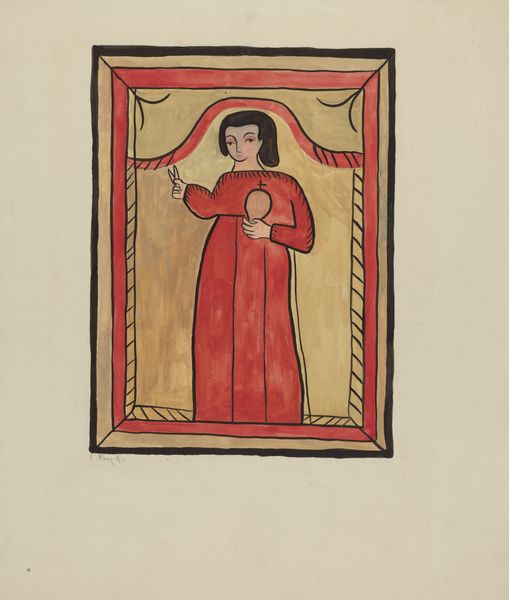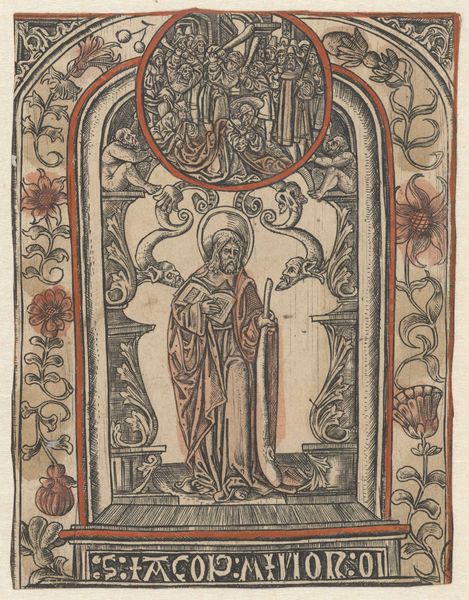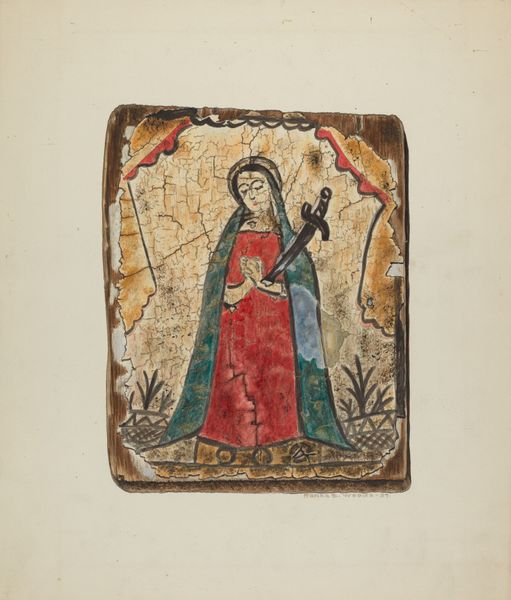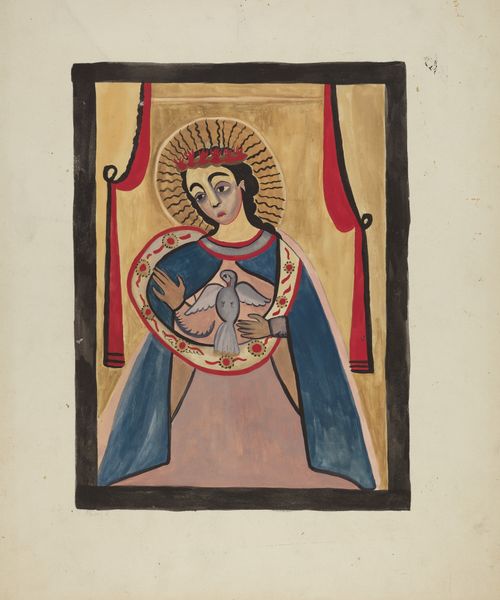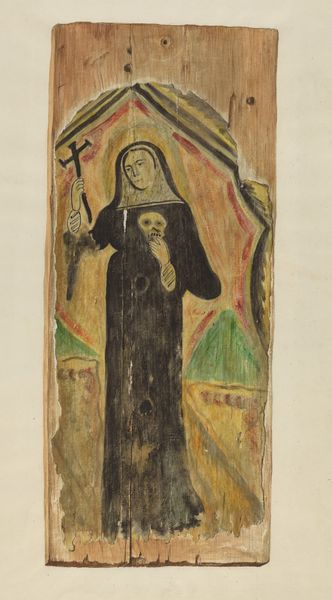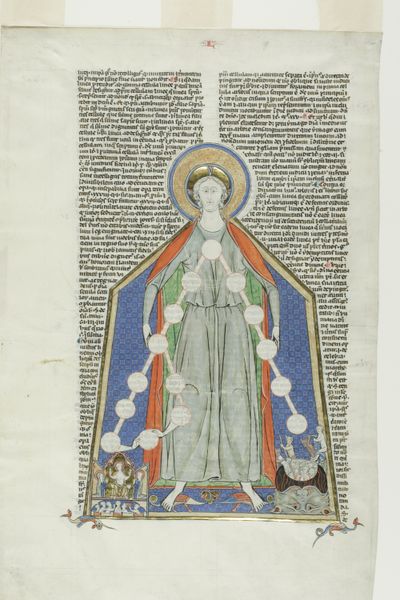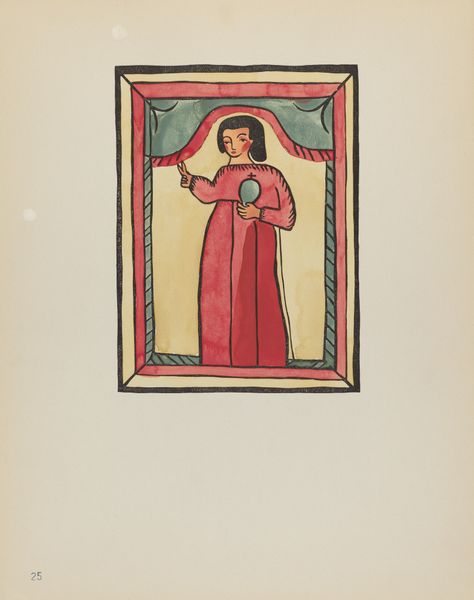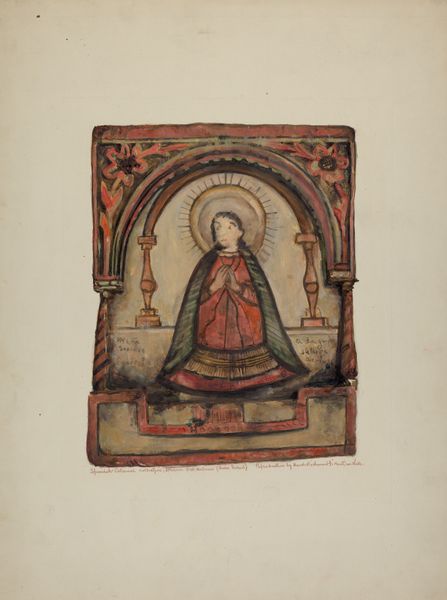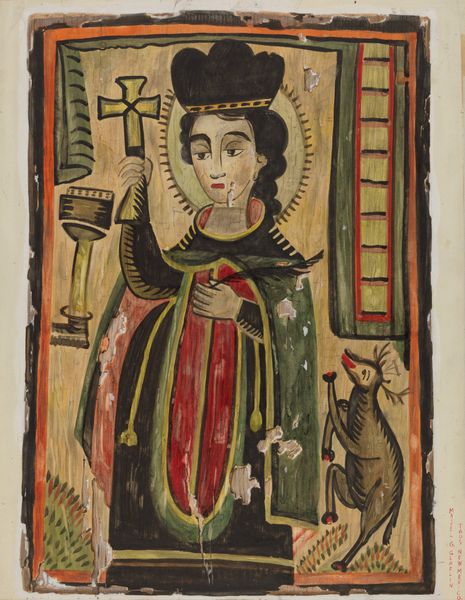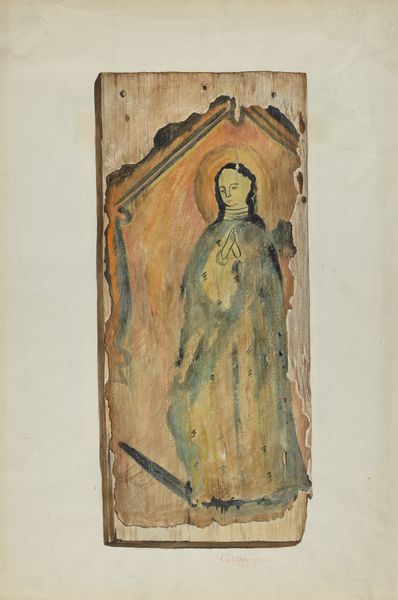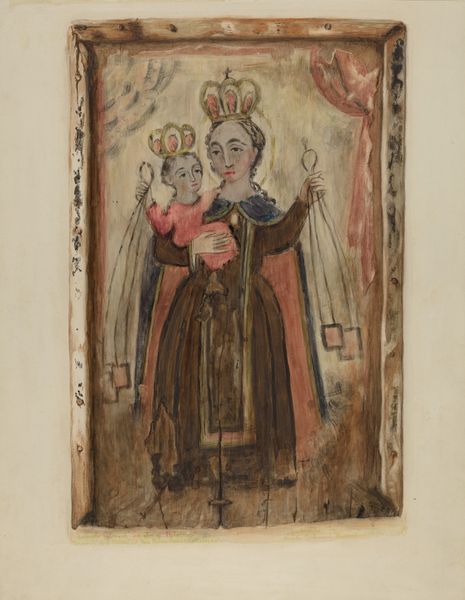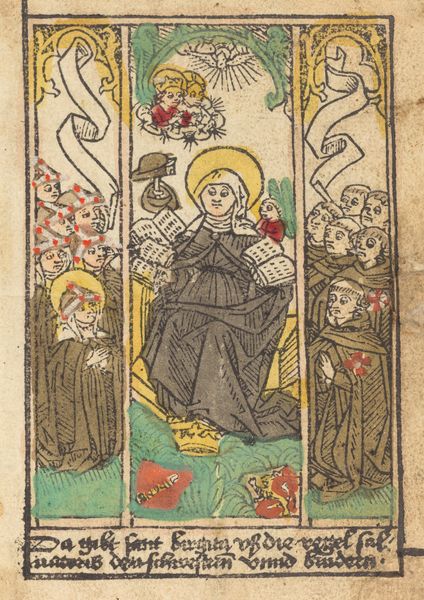
drawing, coloured-pencil, tempera, painting
#
portrait
#
drawing
#
coloured-pencil
#
tempera
#
painting
#
indigenism
#
coloured pencil
#
folk-art
#
history-painting
Dimensions: overall: 44.8 x 32.6 cm (17 5/8 x 12 13/16 in.) Original IAD Object: 12 11/16 x 8 5/16 inches
Copyright: National Gallery of Art: CC0 1.0
Curator: Standing before us is Ranka S. Woods's "Retablo," created in 1937. It employs a mixed media approach with tempera and colored pencil. Editor: My first impression is its rough, almost folksy quality. It looks more like a treasured icon painted on tin than something made with colored pencil and tempera. Curator: Indeed. The artist utilizes those unassuming materials to invoke an aesthetic reminiscent of traditional retablos. The composition, the stylized figure within an oval, bordered frame, suggests an interest in formal representation. Editor: It feels almost subversive to see the textures of those materials at play, as if they're highlighting the physical process of creation, contrasting with the reverential subject. Curator: Woods is certainly playing with that tension. Note the halo; it's less about strict representation and more about visual signification, echoing the symbolic language within folk-art traditions. Editor: Look at how the frame itself is articulated; the somewhat awkward flowers, the simplified decorative elements – these draw attention to the constructed nature of the image. Curator: A deconstruction of traditional iconographic representation maybe? We are presented not with a flawless depiction, but one imbued with an accessible materiality, almost artisanal in nature. Editor: Absolutely. By showcasing the act of its making, "Retablo" becomes a celebration of process as much as it is an icon. You can almost feel the artist's hand moving. Curator: And it really comes together into a beautiful, almost meditative piece. It reveals itself more fully with prolonged study. Editor: It definitely rewards a closer look, shifting expectations of what religious iconography can be when we consider the labor and the tangible reality behind its creation.
Comments
No comments
Be the first to comment and join the conversation on the ultimate creative platform.
